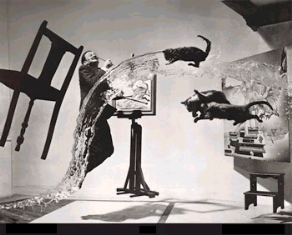As a leader, your perspective on winning may be very different from that of your employees.
If someone offered you a trillion dollars for counting to a trillion by ones, would you accept the challenge? If so, you’d better be genetically wired to live a long time, because it’s going to take a while.
 Assume you count one number per second:
Assume you count one number per second:
There are 24 hours in a day, so 24 x 60(m) x 60(s) = 86,400 in one day. 86,400 x 365 days in a year = 31,536,000. So far, so good. To find how many years it will take, we divide 1 trillion by 31,536,000. Oops! It seems we still have another 30,709 years of counting before we can claim our reward.
What’s the point of this exercise?
Our universe holds many things that lie beyond our ability to truly grasp. For example, the national debt, the distance to the sun, the number of miles traveled in a light year, the size of an atom. We can talk about these things and pretend we understand them, but the truth is we have no real concept of what they mean.
This same phenomenon can happen in your business – if you let it. As the leader, you sit way at the top of the organizational ladder, immersed in high-level thinking and strategy. You’re constantly looking ahead to see where the organization needs to go and what it will take to get there.
Meanwhile, your employees focus on the day-to-day activities required to serve the customer and get the product out the door. For most, the idea of figuring out where the organization needs to be in three to five years is as incomprehensible as planning a mission to Mars.
Clearly, you have a unique role compared to all others. Yet, your role should not be one of those things people in your organization can’t grasp. Part of your job involves developing approaches that lead all employees to having a grasp of what you do, why you do it, and for whom. I often refer to this as teaching employees the business of the business < https://thehumanfactor.biz/teach-employees-the-business-of-your-business/ >.
Change Perspective
Helping employees understand the business of the business requires looking at the business from the vantage point of a front-line employee or a customer or competitor who doesn’t have access to the same data as you. In other words, change perspective. Then work to continuously increase the knowledge of your business so it is comprehensible to everyone in your organization.
Why is this so important?
The human brain has an amazing ability to take in large amounts of data and form patterns from it. However, in order to streamline this process, it also tends to screen out anything that contradicts our prevailing point of view. As a result, we tend to see the world within narrow confines that support what we want to see while ignoring things we should be seeing.
Changing our perspective enables the brain to cast off rigid thinking patterns and see the world in new and different ways. It opens the mind to new possibilities, and focuses our attention on what could be rather than what is or what was. It also enables us to spot new patterns and connections that others might not see – a real advantage in today’s rapidly changing markets.
To change perspective as a leader:
- Broaden the scope of where you look for ideas, information and opportunities
- Study products, companies, industries, demographics and trends not directly related to your business
- Find ways to adapt what others are already doing to your way of doing business
- Actively seek out ideas that contradict your current view of the world
- Ask “what if…?” questions
- Regularly seek input from employees, especially those on the front lines
- Get out of your office and just let your mind wander
Chunk It Down
Employees will likely never have your full 360⁰ view of the business and where it’s going. To put it in context for them, create a one-year destination model, broken into quarterly pieces, where the goal is close enough to seem reasonable yet far enough out to account for significant shifts in external factors. Break projects into bite-size pieces, and longer-term goals into quarters with defined metrics.
In particular, make sure individual employees understand how their job responsibilities relate to and support both the short-term and long-term goals. Then get very clear on the details within each timeframe. Suppose you had to count the number of blades of grass in a football field, a seemingly impossible task. Imagine dividing the grass into 1” squares and counting the blades in each one until the whole field is counted. It would be a tedious, time-consuming task, but now it becomes doable.
Changing perspective can do the same thing for your organization. Get clear on where you want to go. Look at the destination from many different perspectives. Then break the long journey into shorter manageable trips that employees can understand and relate into. Just don’t forget to celebrate at major milestones and when you get there!








